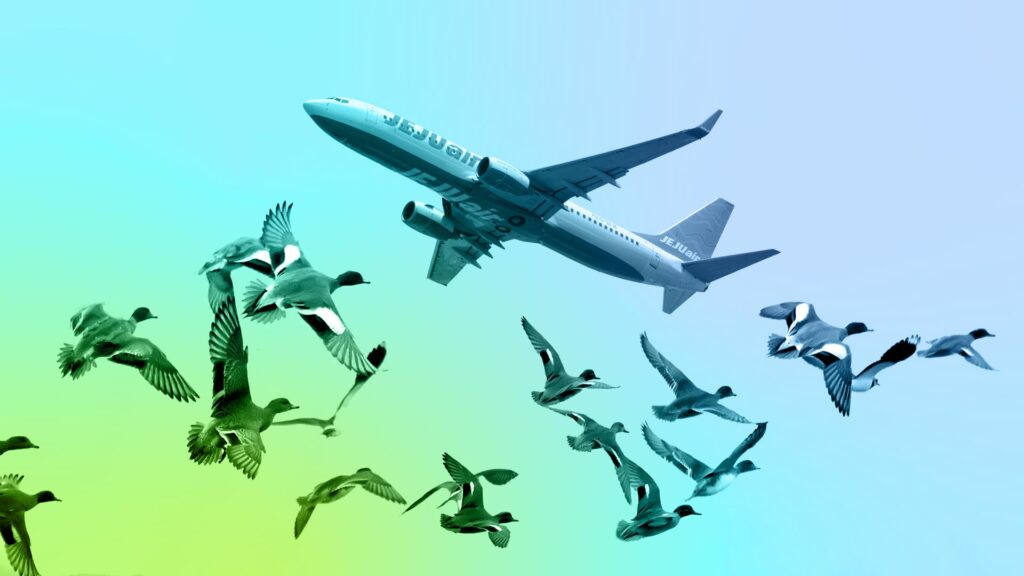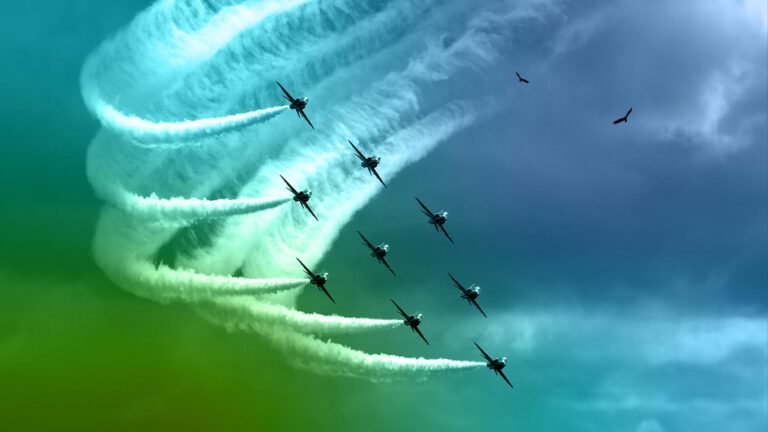Dr Jeff McKee, Avisure’s Director of Research and Development, on some of the lessons to be learned from last week’s release of the preliminary report into the crash of Jeju Air Flight 2216 following a birdstrike where 179 passengers and crew died.
We send our sincere condolences to the friends and family of those who perished in this accident on 29 December 2024.
While aviation accidents rarely result from a single cause, and the ongoing investigation will undoubtedly reveal detail of other contributing factors, McKee says the transcript of the final minutes of ATC communication highlight several issues in the B737-8AS crash which he says reflect industry attitudes. ‘For continuing aviation safety, these must change’, Mckee says.
Firstly, there is the role of ATC and pilots in managing wildlife hazards.
As the transcript below shows, ATC knew that birds were in the vicinity and communicated this to the pilots with 1 minute (2nm) lead time – and yet a serious strike still occurred and unfortunately culminated in a tragedy. At 08:54:43, MUAN TOWER cleared the aircraft to land (presumably from an ILS approach) on RWY01.
At 08:57:50 Tower Advised the aircraft to ‘be cautious of bird activity’. At this point the aircraft was on final with a stabilised approach at about 4nm and 1300’
At 08:58:50 The transponder, FDR & CVR failed (suggesting dual engine/complete electrical failure). At this stage the aircraft was at around 500’ ALT and 1.4nm from touchdown.
Almost simultaneously the pilots transmitted ‘Mayday’, bird strike go-around’.
‘We must change the attitude of civil aviation controllers and aircrew (in civil aviation), both of whom are habituated to dismissing wildlife hazards as meaningless. They often consider “strikes” as innocuous and unmanageable, writing them off as the cost of doing business.’
The danger of that attitude is tragically seen in this crash, and the concerning hull loss statistics. Since January 2009, when the ditching in the Hudson River occurred following an A320 ingesting multiple Canada geese, there have been 65 reported civil aircraft hull losses due to wildlife strike. Thirty of these accidents were fatal (a total of 428 fatalities) and 10 of these accidents involved airline transport category aircraft with more than 30 passengers.
Unlike meteorological knowledge which is foundational in training for aircrew, and ATC, an understanding of wildlife hazards is not.
‘They are neither trained to detect and, recognise wildlife hazards, nor to quickly assess the level of risk those hazards might mean for their immediate operation. That means they cannot readily distinguish between a wildlife scenario that is simply a potential “bug smash” and one that is potentially a smoking hole in the ground’, McKee says.
‘Aircrew and controllers are used to ignoring bird detection and management, relegating it to the background as something airports do and not particularly relevant to flight operations. And yet airports do not collide with birds, aircraft do!’
Secondly, there is a broader problem, namely the lack of standardised language or format to define and communicate wildlife hazard threats, as well as the lack of a standardised, iterative workflow and communications protocols between wildlife controllers, aircrew and ATC.
- In the flight planning phase were the pilots provided with a detailed forecast of wildlife activity in the vicinity of Muan?
- What did the controllers actually say to the pilots regarding the hazard? Did they simply say, “Caution birds in the area?” Or did they specify actionable information such as the position, species, number, mass, altitude and track of the wildlife? Did they give the pilots a likelihood of collision?
- If they did specify actionable information, do the pilots have enough training and experience to quickly distil that information into a collision risk estimate and make a considered operational decision?
One of the main contributors to this disaster is that there are no standardised wildlife hazard detection, assessment and communication systems that are integrated across all areas of civil flight operations, despite the fact we have technology, systems and protocols that could be adapted and validated to do this. This is in stark contrast to the way in which most other civil aviation hazards are addressed and to the way that wildlife hazards are managed in some military arenas.




